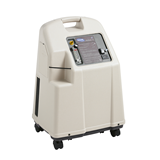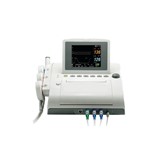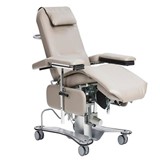Key Takeaways
- Communication over capital: Most patient dissatisfaction stems from poor communication, not a lack of expensive equipment. Focusing on empathy, active listening, and clear explanations is the most effective, zero-cost way to improve the patient experience.
- Map the entire journey: To find what needs fixing, you must see your practice through a patient’s eyes. Walk through every step, from booking the appointment online to receiving follow-up care, to identify small "pain points" that can be easily resolved.
- Manage the wait, not just the time: The frustration of waiting is often about uncertainty, not the duration itself. Proactively communicating delays transforms a negative experience into one where patients feel respected and informed.
- Empower your front-desk team: Your reception staff are your directors of first impressions. Training them in empathetic communication and empowering them to solve minor issues on the spot can defuse frustration and build patient loyalty.
- Feedback is a free roadmap: Actively solicit patient feedback using simple, free tools like online surveys. More importantly, "close the loop" by visibly acting on the suggestions and letting patients know you’ve listened. This builds immense trust.
Introduction: The new benchmark for success in Australian healthcare
In Australia's complex healthcare sector, the pressure is mounting. You're navigating rising operational costs, nationwide staff shortages, and ever-increasing patient expectations. The latest data from the Australian Institute of Health and Welfare (AIHW) shows that while clinical care is generally rated highly, patients consistently flag issues with communication and wait times. The common belief is that fixing these problems requires significant financial investment. But what if the most powerful improvements to patient satisfaction didn't cost a cent?
This article is designed for Australian practice managers, clinic owners, and healthcare leaders who need to elevate their patient experience without increasing their budget. We'll explore practical, cost-neutral strategies that focus on the human side of care, the small, pivotal moments that define a patient’s entire journey. By refining your processes and empowering your people, you can build a reputation for exceptional care that translates directly into patient loyalty and a stronger practice.
The real cost of a poor patient experience
Before we explore solutions, it's vital to understand that patient dissatisfaction has a tangible business cost. It isn’t just about a negative Google review; it directly impacts your bottom line and operational efficiency.
An unhappy patient is less likely to adhere to their treatment plan, leading to poorer health outcomes and more complex interventions later. Research published in the Medical Journal of Australia has consistently shown a direct link between the quality of patient-practitioner communication and treatment adherence. Dissatisfied patients are also more likely to "doctor shop," which fragments their care and increases your administrative load.
Furthermore, your reputation is your most valuable asset. A 2024 survey revealed that over 80% of Australians check online reviews before choosing a new healthcare provider. A single frustrated patient can deter dozens of potential new ones. Conversely, a happy patient becomes your best advocate. They provide word-of-mouth referrals and positive online testimonials, powerful, free marketing that builds a sustainable and trusted practice. Retaining a patient is far more cost-effective than acquiring a new one, making patient satisfaction a critical performance indicator.
Mapping the patient journey: Your blueprint for improvement
You can't fix what you can't see. The most effective first step is to experience your practice from the patient's perspective. This means meticulously mapping every touchpoint, from their initial thought of booking to their final interaction.
Conduct a "mystery shopper" exercise yourself or assign it to a team member. Critically assess each stage:
- Booking: How easy is it to find your contact details? If you have online booking, is it mobile-friendly and intuitive? How many rings until the phone is answered? A recent report by the Australian Bureau of Statistics (ABS) noted that difficulty getting an appointment was a key barrier to accessing care for many Australians.
- Arrival: Is your signage clear from the street? Is the clinic entrance welcoming? What is the immediate impression? Does your reception team make eye contact and offer a warm greeting, or are they visibly stressed?
- The Wait: Is the waiting area clean and uncluttered? More importantly, is there proactive communication about delays? A simple sign stating, "Our doctors are running approximately 15 minutes late. We appreciate your patience," can turn frustration into understanding.
- The Consultation: Beyond the clinical diagnosis, does the practitioner build rapport? Do they listen without interrupting and explain conditions and treatments in simple, jargon-free language?
- Checkout and Follow-up: Is the payment process efficient? Are instructions for prescriptions or future appointments clear and, ideally, provided in writing?
This process will uncover the "pain points", small moments of friction that cumulatively create a negative experience. These are your prime opportunities for high-impact, zero-cost improvements.
The art of communication: Your most valuable (and free) asset
The vast majority of patient complaints are rooted in communication failures, not clinical errors. Patients need to feel heard, respected, and understood. Making exceptional communication a core pillar of your practice is the single most powerful strategy for boosting satisfaction.
Implement active listening
Train every member of your team, from clinicians to receptionists, in the art of active listening.
- Paraphrase to confirm: After a patient explains their problem, say, "So, if I'm understanding correctly, you've had this headache for a week, and it's worse in the mornings. Is that right?" This validates their experience and ensures you're on the same page.
- Use empathetic language: Simple phrases like, "That sounds really difficult," or "I can see why you're worried," build immediate trust and show the patient you care about them as a person, not just a set of symptoms.
Use the "Teach-Back" method for clarity
A common source of patient anxiety is leaving an appointment feeling confused about their treatment plan. The "Teach-Back" method is a simple, proven technique to ensure comprehension. After explaining instructions, ask the patient to repeat them back in their own words.
For example: "We've covered a lot today. To make sure I did a good job explaining everything, can you tell me how you're going to take this medication?" This isn't a test of the patient's memory; it's a check on how well you communicated.
Transforming wait time into valued time
No one enjoys waiting, but you can significantly improve the experience without reducing the actual time.
A realistic scenario: A patient arrives for their 10:00 AM appointment and is still waiting at 10:25 AM. Their frustration is growing, not just because of the delay, but because no one has acknowledged it.
The zero-cost solution:
- Acknowledge and inform: Train your reception staff to monitor wait times. At the 15-minute mark, they should proactively approach the waiting patient and say, "Hi Ms. Smith, I'm so sorry for the delay. Dr. Evans is running a bit behind. It should be another 10 minutes. Thank you so much for your patience."
- Offer options: For longer delays, empower staff to offer choices. "We can keep your place in the queue, or if you'd prefer, I can rebook you for our first slot this afternoon?"
This proactive communication respects the patient's time and gives them a sense of control, transforming a frustrating experience into one where they feel seen and valued.
Empowering your frontline team
Your reception and administrative staff are the face of your practice. Their attitude can set the tone for the entire patient visit. Investing time in their training, not money in new systems, delivers an incredible return.
Hold brief, 15-minute team huddles each week focused solely on the patient experience. Discuss challenges from the past week and brainstorm solutions together. This fosters a culture of shared ownership and continuous improvement.
Most importantly, empower your team to solve problems. Give them the autonomy to handle minor issues without needing a manager's approval. Can they waive a small administrative fee to resolve a billing dispute? Can they offer a bottle of water to a patient who has been waiting a long time? When your team feels trusted and empowered, they are better equipped to provide compassionate and effective service, which is fundamental to a positive patient experience.
Closing the feedback loop
Asking for feedback is easy. Acting on it is what builds trust.
Instead of waiting for complaints, proactively solicit feedback. Use a free tool like Google Forms to create a simple, three-question survey and text the link to patients after their appointment.
- How would you rate your overall experience today? (1-5 stars)
- What is one thing we did well?
- What is one thing we could do better?
The crucial step is to "close the loop." When you identify a recurring theme, make a change and then tell your patients about it. Put up a small sign in your waiting room or a notice on your website that says:
"You spoke, we listened! Based on your feedback, we've now added a water cooler to the waiting area. Thank you for helping us improve."
This simple act proves that you value your patients' opinions, turning them into partners in your practice's success. It fosters a powerful sense of community and loyalty that no marketing budget can buy.
Conclusion
Ultimately, elevating the patient experience is not a matter of budget, but a matter of culture. The strategies outlined in this article, from mastering empathetic communication to empowering your frontline team and actively closing feedback loops, cost nothing to implement. Yet, their return on investment is immense, fostering patient loyalty, improving clinical adherence, and building a reputation for compassionate care that no marketing campaign can buy. The journey begins not with a financial plan, but with a simple choice. Start today by mapping your patient journey and identifying one small, human-centric change your team can make this week.





-160x160-state_article-rel-cat.png)




















